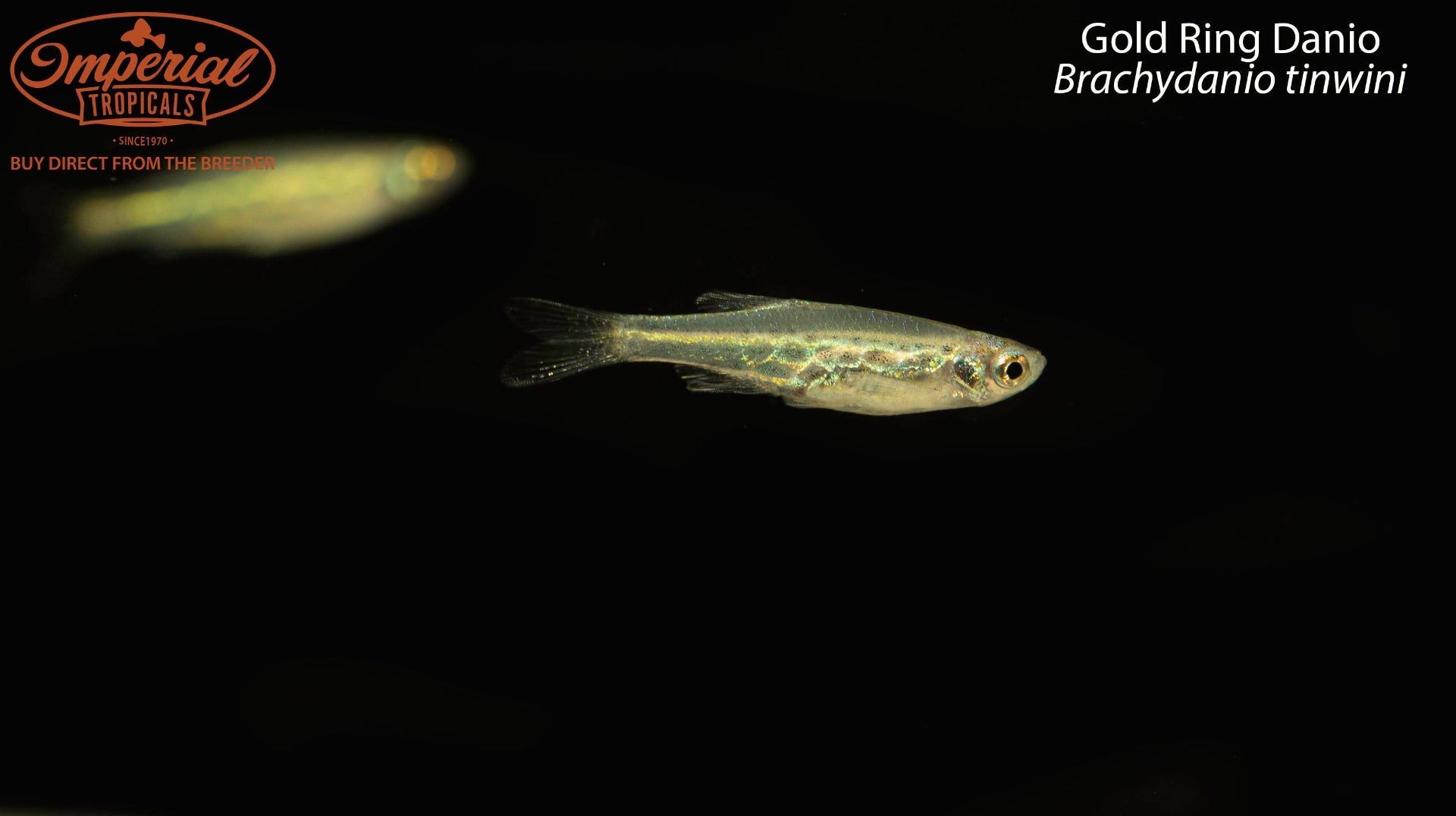
Remarks: The gold ring danio is somewhat new to the hobby but has certainly taken it by storm. Back in 2009, ichthyologists Kullander and Fang discovered the gold ring danio and gave it a scientific name after collector and exporter, U Tin Win, whom was the first to widely export these fish. Almost immediately these nano fish gained tons of popularity among fish keepers overseas due to their active and peaceful personalities, decently hardy nature, and gorgeous coloration. When young or stressed, gold ring danios tend to be mostly silver in color with a tan top that helps them blend in with the water in the wild. When healthy and in the right conditions, it is easy to see where they get their common name and popularity from. Mature fish develop gold iridescence that forms rings around the black spots across their bodies and is also present on the eyes. Sometimes they also will shine with some purple, green, and pink colors when at their best. This coloration is strongest in males and weak in females. You will see these colors best when the fish are kept in optimal conditions, fed a high quality diet, are kept on a dark background/substrate, and are provided lots of cover in the form of décor and live plants.
While there is a chance populations exist elsewhere, the gold ring danio is currently known to be endemic to the Mogaung Chaung, “Chaung” meaning stream or river, in northern Myanmar. This is the same watershed in which the glowlight danio (Celestichthys choprae) is also endemic. Both species inhabit areas of clean, slow flowing water which is sourced mainly from glacier melt and rainfall causing the water to be very soft despite its fairly neutral pH. The heavy amounts of botanicals, algae, and aquatic plants support a highly diverse food web including many types of tiny crustaceans and insect larvae upon which the gold ring danio feeds. In captivity, they will have the best chance at thriving if their wild habitat is replicated as this will allow for a healthy population of micro-organisms for the danios to feed on in-between feedings to support their fast metabolism. A tight-fitting lid is also recommended as these fish are notoriously jumpy and can leap out of small holes in the top of the tank.
Gold ring danios live in large schools in the wild and are highly social so they should never be kept in groups smaller than 8 individuals. With them, it is always the more the merrier and having a bigger group increases the likelihood of witnessing unique social behaviors including courting and spawning. If not kept in proper numbers, they will become stressed resulting in poor health, constant hiding, and dull colors. With the gold ring danio’s small size and hardy nature, it will not be hard to accommodate a sizable school as a small group can be kept in a tank as small as 10 gallons. Unlike most danios, they rarely ever nip and are essentially completely peaceful to anything they don't consider food. They do fantastic in peaceful community tanks so long as their tankmates are not large enough to swallow them. The small size of the gold ring danio even makes them safe to house with adult cherry shrimp though they will predate on baby shrimp (shrimplets). As they like to stay on the closer neutral side of acidic conditions, there is a plethora of choices for tankmates. Whether keeping them in a species only nano tank or in a community setting, we absolutely love these tiny nano fish that make an excellent addition to almost anyone’s collection.